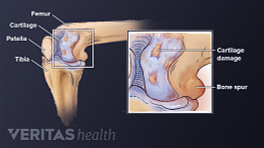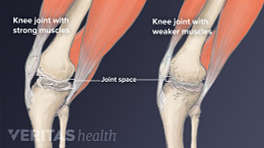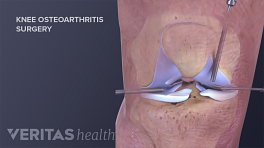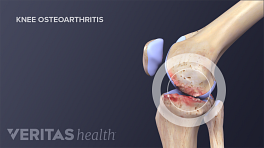Knee osteoarthritis is a condition where cartilage and other tissues in the knee degenerate, or break down, which can lead to inflammation, pain, and swelling in the knee joint.
The knee is the largest joint in the body. It is the point where the femur, or thigh bone, meets the tibia, or shin bone. The fibula is a smaller bone that runs beside the tibia. The joint also includes the patella, commonly known as the kneecap.
Articular cartilage covers the condyles, the curved ends of the femur and tibia. A rubbery segment of cartilage called the meniscus is located between the femur and tibia and acts as a shock absorber.
Articular cartilage also lines the underside of the patella, which floats above the spot where the other leg bones meet.
In a healthy knee, the presence of cartilage allows the leg bones and the patella to glide smoothly during the joint’s hinge-like movements.
But with knee osteoarthritis, this cartilage begins to degenerate.
The first sign of knee osteoarthritis is often aching pain, swelling, or stiffness in the knee.
The knee cartilage begins to thin and may even disappear completely, causing direct friction of the knee bones against one another.
This bone-on-bone friction can lead to degenerative changes in the bones, including the development of osteophytes, or bone spurs, in the knee joint. Bone spurs can cause pain if they increase joint friction.
As knee osteoarthritis progresses, patients can lose some or all of the knee’s range of motion, or its ability to bear the body's weight.










